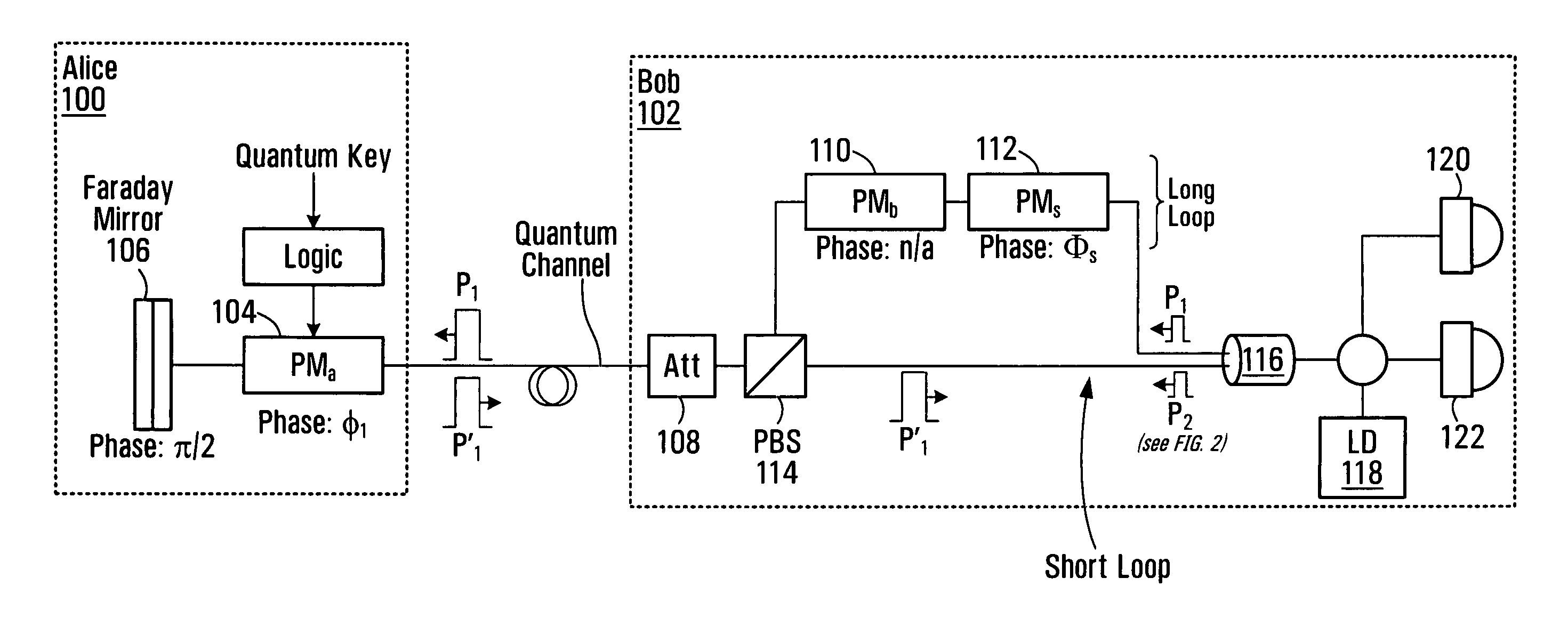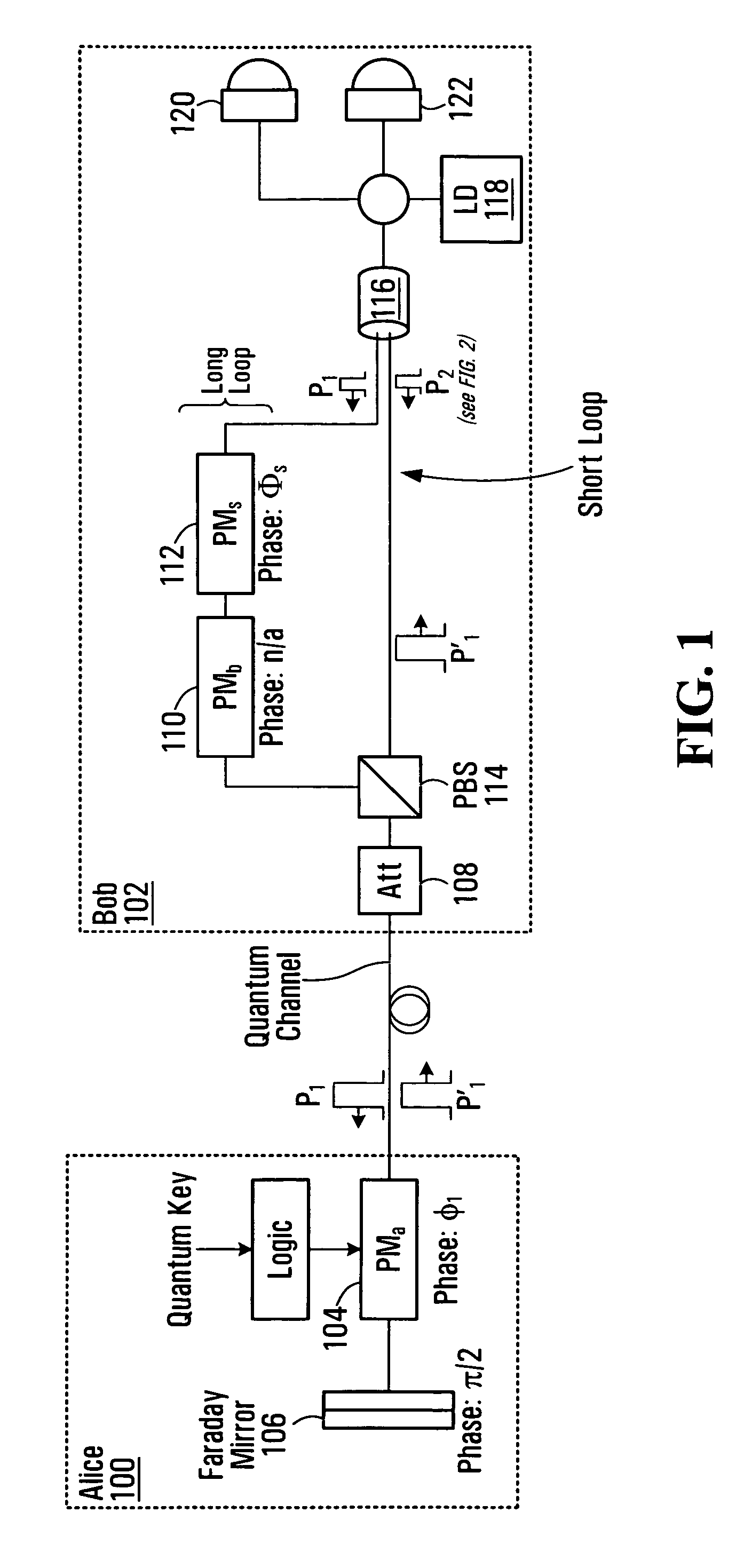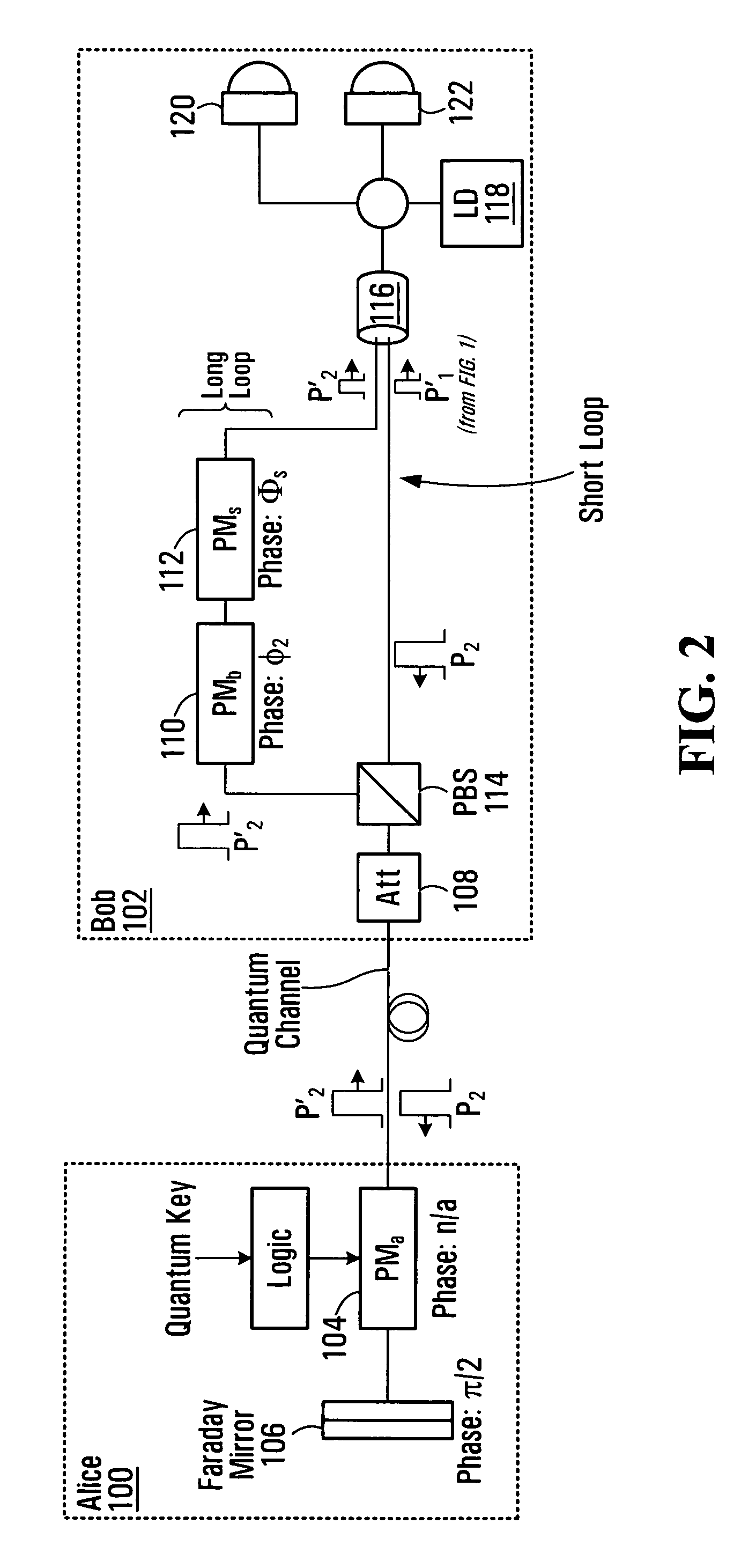Double phase encoding quantum key distribution
a quantum key and double phase technology, applied in the field of network communication, can solve the problems of reducing the security level of public key encryption, difficult to reverse calculate, and difficult to calculate for the computer, and achieve the effect of enhancing the bit ra
- Summary
- Abstract
- Description
- Claims
- Application Information
AI Technical Summary
Benefits of technology
Problems solved by technology
Method used
Image
Examples
Embodiment Construction
[0017]FIGS. 1 and 2 illustrate a first node 100 (also referred to as “Alice”) and a second node 102 (also referred to as “Bob”) of a communications network. Alice 100 and Bob 102 employ double phase encoding quantum key distribution (“QKD”). Alice 100, the sender of a quantum key having a plurality of quantum key bits, includes a phase modulator PMa 104 and a Faraday Mirror 106. Bob 102, the recipient of the quantum key, includes an attenuator 108, phase modulator PMb 110, phase modulator PMs 112, Polarization Beam Splitter (PBS) 114, a coupler (and / or beamsplitter) 116, a photon source 118 (e.g., a laser diode), and a detection unit (including a detector 120 triggered by a pulse affected with constructive interference and a detector 122 triggered by a pulse affected with destructive interference).
[0018]A series of short laser pulses is employed for quantum key distribution between Alice 100 and Bob 102. The short laser pulses are generated by the laser diode 118 at Bob 102. Conside...
PUM
 Login to View More
Login to View More Abstract
Description
Claims
Application Information
 Login to View More
Login to View More - R&D
- Intellectual Property
- Life Sciences
- Materials
- Tech Scout
- Unparalleled Data Quality
- Higher Quality Content
- 60% Fewer Hallucinations
Browse by: Latest US Patents, China's latest patents, Technical Efficacy Thesaurus, Application Domain, Technology Topic, Popular Technical Reports.
© 2025 PatSnap. All rights reserved.Legal|Privacy policy|Modern Slavery Act Transparency Statement|Sitemap|About US| Contact US: help@patsnap.com



